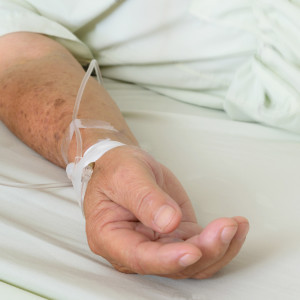In a recent, much noted article, more than 100 prominent oncologists complained that the high cost of new cancer drugs — in excess of $100,000 per treatment — makes them unaffordable for patients. They suggest the imposition of “fair” prices.
But are high prices truly a problem for patients? Physicians’ overuse of treatments that have small marginal benefit and high financial, physical and psychological costs is far more troublesome.
The oncologists claim that with insurance out-of-pocket expenses running 20 percent to 30 percent of cost, a cancer patient could be responsible for $25,000 to $30,000. But most insurances have far lower maximum out-of-pocket expense limits: Affordable Care Act exchange insurance policies set maximum out-of-pocket limits at $6,600 for individuals and $13,200 for families; Medicare’s Part D Catastrophic Coverage Threshold is $4,700 after which patients pay a maximum of 5 percent of drug costs; many large group employer plans have similar limits.
In addition, most drug companies have assistance programs for patients who cannot afford their drugs. Finally, most insurers and hospitals negotiate substantial discounts from list prices. Drugs are not the greatest financial risk to cancer patients — drugs are only a small percentage of the high costs of cancer care.
The oncologists concede that drug companies are entitled to a “reasonable expectation of return on investment” and “reasonable profits.” But drug development is expensive and unpredictable. It’s hard to forecast which drugs will be successfully developed and FDA approved and harder still to know which approved drugs will be clinically and financially successful.
The average cost to market for a new drug is $2.6 billion, comprising out-of-pocket costs including expenditures on failed projects (only one in 10 drugs reaches the market) and opportunity costs (the value of foregone earnings from alternative investments).
Oncology drug development often costs more. Approved drugs with marginal benefits and limited market success are just as risky and expensive to develop as breakthrough drugs. To continue new product development companies must cover the R&D and opportunity costs of many failures and few successes.
Oncologists are no better arbiters of what is “reasonable” profit or return on investment than anyone else. Their expertise is in prescribing treatments that will be of value to their patients. Yet it is precisely in this area that they have been deficient.
A 2012 American Society of Clinical Oncology (ASCO) panel identified widespread chemotherapy use among patients for whom there was no evidence of clinical value. Despite the lack of evidence supporting the practice and ASCO recommendations against it, chemotherapy is widely used in advanced cancer patients with poor performance status.
While ASCO does recommend treating terminal patients who have good performance status, a new JAMA Oncology study casts doubt on this chemotherapy since it did not improve survival and worsened patients’ quality of life.
Not all new, expensive cancer treatments are worthless. Imatinib (Gleevec) — costing $30,000-$100,000 per year for life — improved Chronic Myelogenous Leukemia five-year survival from 31 percent to 90 percent. But most therapies for solid cancers are far less effective. New cancer drugs are routinely approved that offer statistically significant, but clinically unimportant, improvements.
Cetuximab (Erbitux) was touted at ASCO’s 2008 meeting for improving lung cancer treatment. The survival advantage was only 1.2 months and was accompanied by high rates of side effects. Likewise, the FDA approved Erlotinib (Tarceva) to treat pancreatic cancer on the basis of a 0.4 month (12 days) improvement in survival with increased rates of severe rash and diarrhea.
There is no reason, outside of a research study, that oncologists should offer successive rounds of minimally-effective treatments, but they routinely do. Physicians understandably feel an emotional imperative to “do something” when dealing with desperate cancer patients. But that “something” should provide a favorable risk/benefit relationship and not mislead anxious patients. Nothing forces an oncologist to prescribe expensive, ineffective medications with multiple side effects when a cheaper, equally (in)effective medicine, or no treatment at all, will do.
If oncologists limited their prescription of high-cost, low-value, drugs, prices would decline to stimulate sales and would more accurately reflect the drugs’ value to patients. When Memorial Sloan Kettering Cancer Center announced it would not use Aflibercept (Zaltrap) because it was twice as expensive as, and no more effective than alternative (minimally-effective) medicines, the manufacturer, Sanofi, citing “market resistance,” cut the price in half.
No one wants to pay high drug prices. Measures to ameliorate escalating development costs are needed. Meanwhile, oncologists can best serve their patients by limiting the use of expensive treatments that offer little more than side effects and false hopes.

